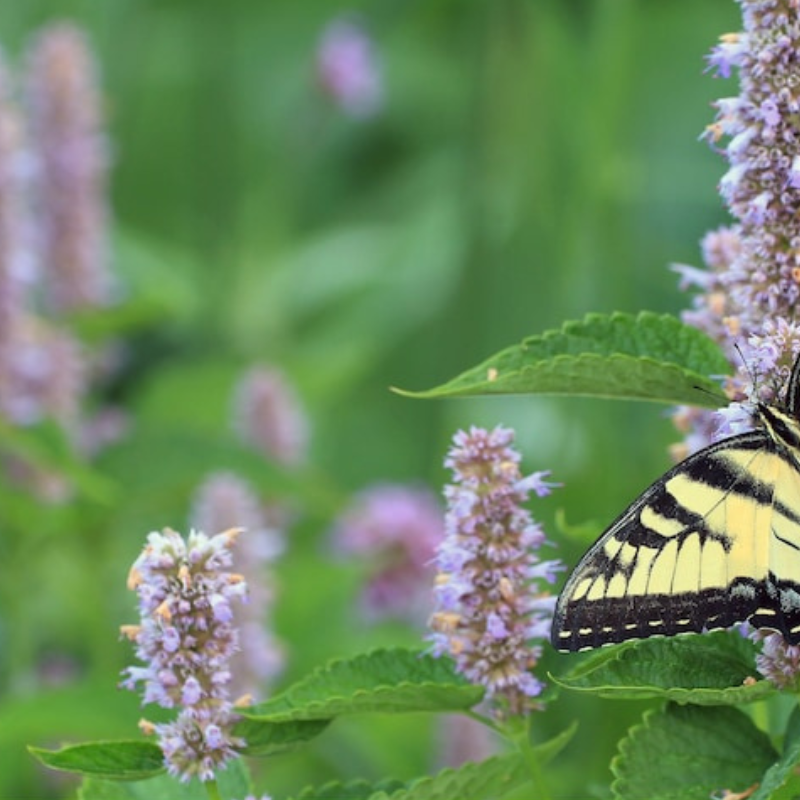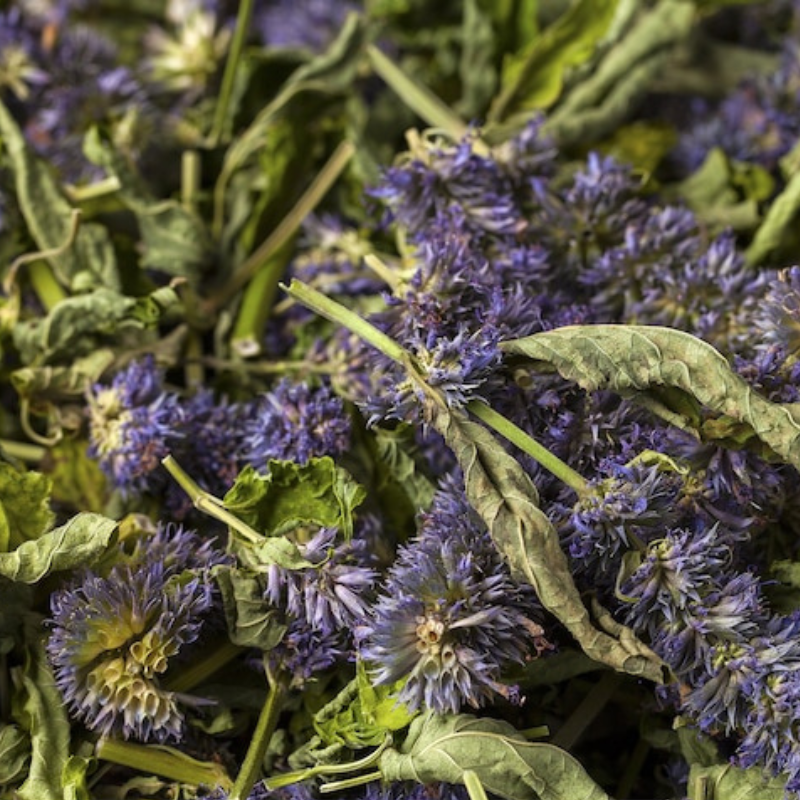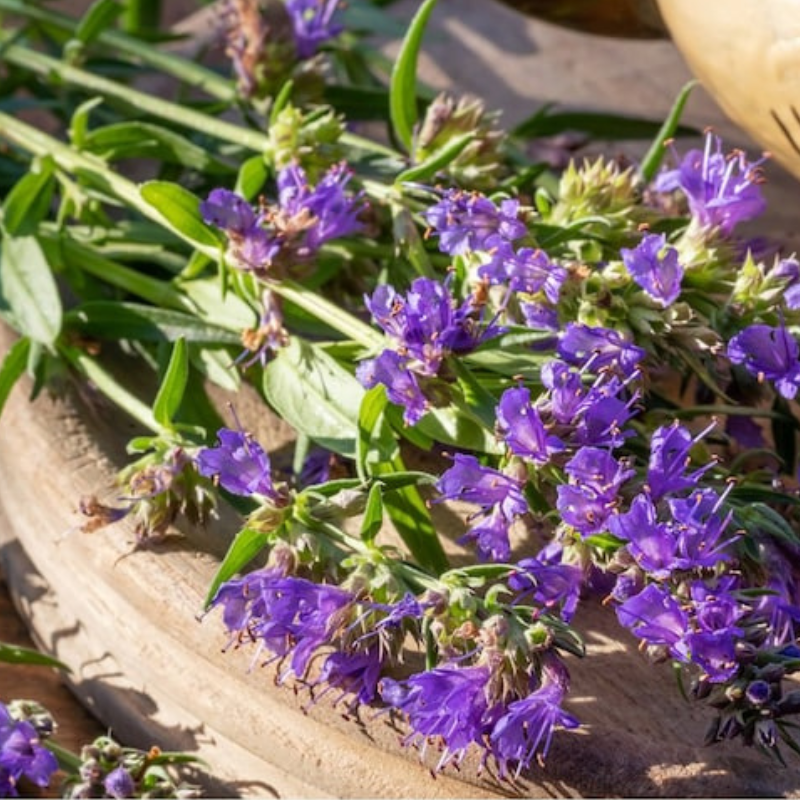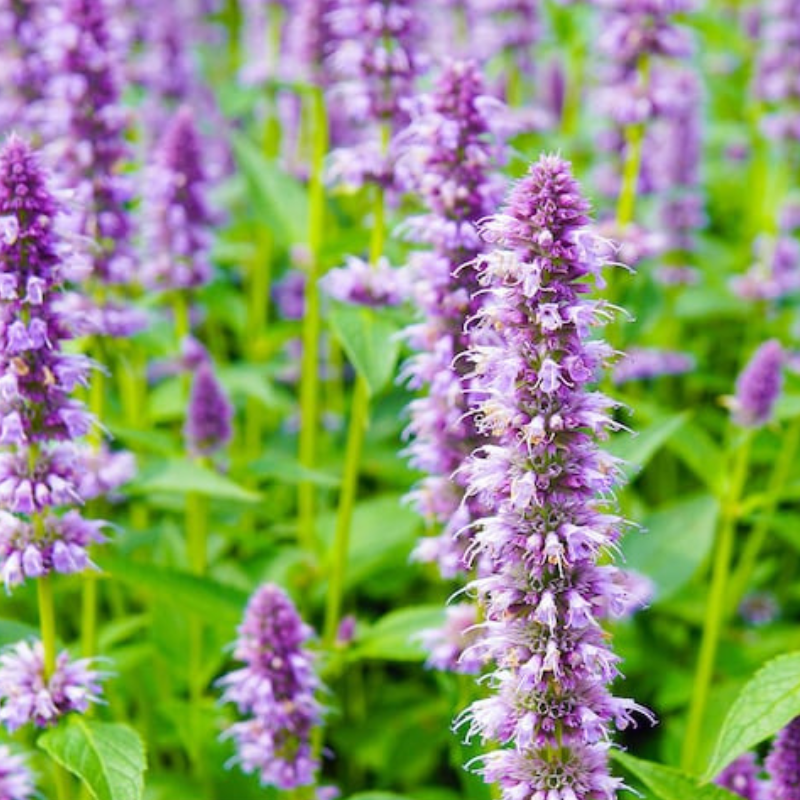- Historical context: Anise hyssop (Agastache foeniculum) is a perennial herb native to North America. It has been used by Native American tribes for centuries for its medicinal properties and as a flavoring agent.
- Geographical origination: Anise hyssop is native to the prairies and plains of North America, particularly in the regions that are now the United States and Canada.
- Relevant cultural significance: The plant holds cultural significance among Native American tribes, such as the Cheyenne, who used it for medicinal purposes and in ceremonial practices.
- Time period of discovery: The use of anise hyssop dates back to pre-colonial times, with documented use by Native American tribes.
- Original habitat: Anise hyssop thrives in prairies, open woodlands, and along the edges of forests.
- Notable historical uses: Historically, anise hyssop was used to treat colds, coughs, and fevers. It was also used as a flavoring in teas and culinary dishes.
- Ideal temperature range: Anise hyssop grows best in temperatures ranging from 60°F to 75°F (15°C to 24°C).
- Soil type: The plant prefers well-drained soil with a pH range of 6.0 to 7.5. It can tolerate poor soil conditions but thrives in rich, loamy soil.
- Sunlight requirements: Anise hyssop requires full sun to partial shade. It performs best with at least 6 hours of direct sunlight per day.
- Watering needs: The plant is drought-tolerant once established but benefits from regular watering, especially during dry periods. Avoid overwatering to prevent root rot.
- Planting season: Plant anise hyssop seeds in the spring after the last frost or in the fall. Seeds can be started indoors 6-8 weeks before the last frost date.
- Germination time: Seeds typically germinate within 10-14 days under optimal conditions.
- Growth cycle duration: Anise hyssop is a perennial plant that will return year after year. It reaches maturity in its first growing season and can bloom from mid-summer to early fall.
- Common pests and diseases: Anise hyssop is relatively pest-resistant but can be affected by aphids, spider mites, and powdery mildew. Regular monitoring and proper spacing can help prevent these issues.
- Companion planting advice: Anise hyssop is a great companion plant for vegetables and other herbs. It attracts beneficial insects like bees and butterflies, which aid in pollination.
- Common challenges and solutions: Common challenges include poor germination rates and susceptibility to root rot in poorly drained soil. To improve germination, stratify seeds by chilling them in the refrigerator for a few weeks before planting. Ensure proper soil drainage to prevent root rot.
- Nutritional values: Anise hyssop leaves contain vitamins A and C, as well as essential oils that contribute to its aromatic properties.
- Health benefits: The herb has been traditionally used to treat respiratory issues, digestive problems, and to boost the immune system. It has anti-inflammatory and antimicrobial properties.
- Culinary uses: Anise hyssop leaves and flowers can be used to flavor teas, salads, and desserts. The leaves have a sweet, licorice-like flavor that pairs well with fruits and other herbs.
- Medicinal uses: Anise hyssop has been used in herbal medicine to treat colds, coughs, and fevers. It is also used as a digestive aid and to relieve anxiety.
- Other unique advantages: Anise hyssop is an excellent plant for attracting pollinators like bees and butterflies to the garden. It also has ornamental value due to its vibrant purple flowers and aromatic foliage.












